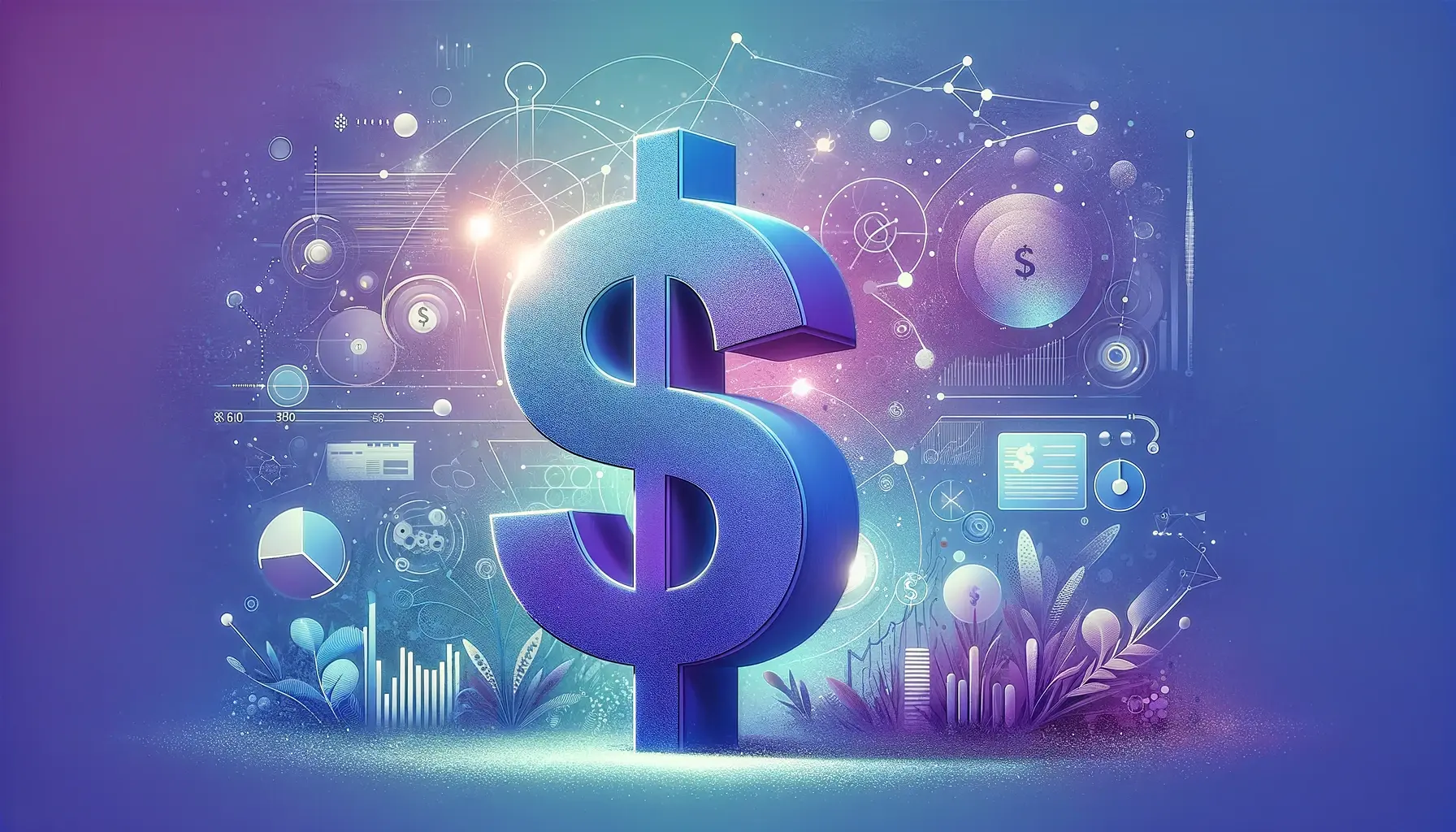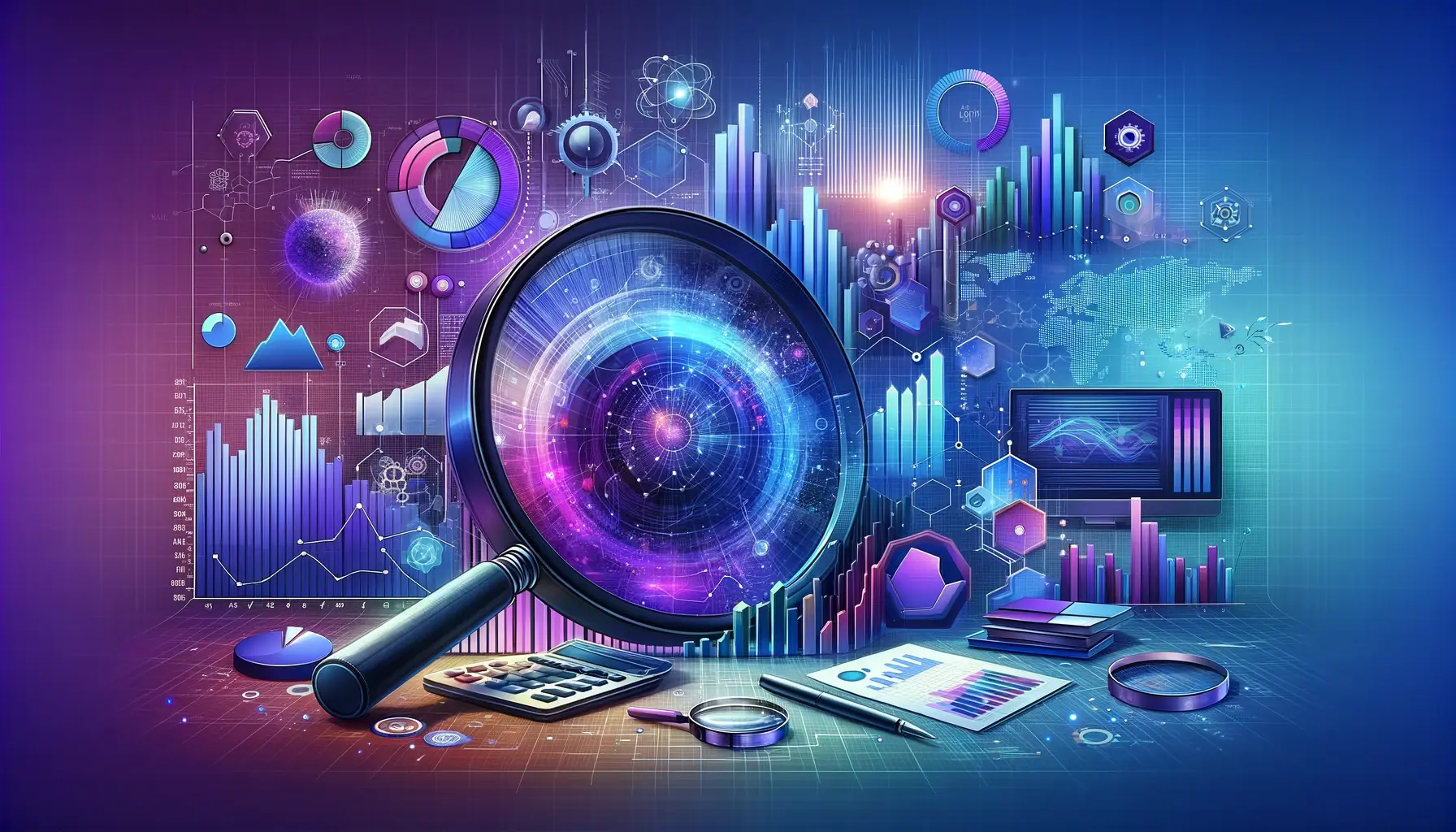Benefits of AI for Revenue & Sales Forecasting

If you could analyze data in less time and with less effort, would you? Check out how AI can assistant with sales and revenue forecasting
Two questions for you.
Question #1: Would you rather rely on guesswork or turn to hard data once it’s time for you to make a critical business decision?
Question #2: If there was a way for you to analyze data in less time and with less effort, would you take it?
Companies that rely on data for marketing and sales improve their ROI by 15-20%, and they’re 5-6% more profitable than their competitors.
This is easier said than done though. With viral trends, changing regulations, natural disasters, and geopolitical upheaval almost daily news, revenue and sales forecasting is a major challenge.
That’s where sales AI revenue tools come in.
AI-driven revenue forecasting is a faster option for quickly and painlessly updating models and running projections for different situations. And if something does happen, AI can rapidly update your sales forecasts so that you can respond swifter and save precious seconds.
AI-empowered revenue forecasting is a faster option for running quick projections in different scenarios. And if something does happen, you can save precious seconds and address the outcome painlessly.
Here’s a closer look at how AI can assist with forecasting revenue and sales.
Why are accurate sales forecasts important?
Why should you actually bother with accurate sales forecasts? Sure, nothing’s guaranteed, and you can’t predict every little thing. But having some clarity about where you’re heading will help you beat your competitors who lack focus.
Ultimately, a profitable business is all about smart resource allocation. Whether you’re managing GPU capacity for your software systems, ordering new inventory, or creating a staff schedule, one thing always holds true: your demand needs to line up with your investment. The better you can match your resources with actual demand, the less you’ll lose. And that’s the whole point of accurate sales forecasts.
Which factors affect forecasts?
Any good forecasting strategy takes four main factors into account: market trends, seasonality, your competitor’s activity, and your sales team’s strength.
Market trends
Customer spending habits are closely tied to market trends. A booming economy with low unemployment will increase demand for premium products, while during a recession, consumers often spend less and focus on essentials.
New innovations can also shake up a market, similar to how e-commerce disrupted traditional retail stores and how the sharing economy enabled business models like Airbnb and Uber.
Seasonality
Where are your typical sales peaks and lows? Retailers ramp up for the Black Friday rush while travel businesses boom during the summer. An effective forecast will consider both fixed seasonal events and your past sales.
Competitive landscape
What direction are your competitors headed? If one of your top competitors has announced a massive release taking place soon, this could impact buyer behavior.
Sales team performance
Your sales team structure, compensation, incentives, and training all affect sales performance. What’s more, the historical over- or underperformance of certain products, teams, or locations can serve as indicators of how sales may pan out.
While each of these factors is clear, predicting what impact their combined effect will have is more difficult, especially if you make forecasts in a traditional way.
Historical forecasting: a bit backwards
What do traditional revenue projection techniques imply, though? First of all, they are all about looking at the past only. You simply rely on what happened before to guess what might happen next.
This is a major challenge when businesses need resilience right now. Global events can reshape entire industries overnight. When you need to adapt quickly, last year’s data isn’t enough.
What’s more, conventional methods involve spreadsheets, manual data entry, and pure human judgment. Considering each trend and shift in isolation makes the whole process even less effective.
Challenges with traditional forecasting methods
Here are some other valid reasons why familiar approaches might not work out these days.
Manual processing is prone to error
Think about how many data sources go into 360 analysis. Internal sales figures span products, regions, and customer segments. Then, economic data, competitor activity, and spending patterns will be added.
This vast amount of data means manual revenue forecasting strategies are both labor-intensive and error-prone. Mistyping a number or copy-pasting the wrong cell can throw an entire forecast out of whack, making it useless for critical business decision-making.
Manual forecasts tend to be surface-level
Even when you manage to combine all your data sources, traditional tools like spreadsheets lack visibility. Your overall sales might have increased last quarter, but is the increase coming from just a few big clients or a larger customer base?
Getting the most out of leveraging data requires advanced forecasting methods. Without them, you can easily miss nuances that have a big impact on strategy.
The bigger the scale, the harder to forecast
When you’re small, using a spreadsheet for forecasting is manageable. But as you expand product lines, sales channels, and markets, tracking updates and impacts from small changes can become a nightmare.
To make intelligent decisions of the kind our high-tech world demands, you need something far more powerful than old-school forecasting techniques — AI-driven revenue prediction tools.
What are the benefits of AI for sales and revenue forecasting?
Artificial intelligence is ideal for crunching massive datasets, detecting subtle patterns, and automatically giving precise projections. This brings massive advantages to forecasting work.
Task automation
First, AI can handle tedious grunt work with little to no human intervention. Revenue prediction software can ingest raw data from multiple sources, and when new data rolls in, it can easily generate updated forecasts. And if you need to test different scenarios, AI can run hundreds or even thousands of simulations.
Ability to analyze large datasets and identify patterns
Datasets from ERP systems, sales tools, public records, and so on are huge. AI can process them effortlessly and determine which variables matter most and how they relate.
This ensures your forecasts take into account every variable impacting your revenue, from supply chains to seasonal demand cycles.
Real-time insights for faster decision-making
AI-based sales prediction software isn’t just fast at static data crunching. It also monitors data streams in real time to generate up-to-the-second revenue projections.
For example, when a new industry-specific regulation comes into effect, AI can immediately create updated forecasts so you can adjust.
More accurate predictions
With AI taking over repetitive forecasting tasks, dataset processing, and real-time data stream monitoring, projection accuracy increases dramatically.
Thanks to machine learning, an AI model can self-optimize for even greater accuracy over time, so your sales and revenue forecasts will keep getting sharper and sharper.
Improving customer engagement
Isn’t this the ultimate goal? When AI takes care of routine forecasting tasks, your team can dedicate more time to the most valuable customers.
By analyzing huge amounts of customer data, AI can spot trends in customer behavior. This will help you customize your approach for each type of customer.
Also, when AI monitors data in real time, you can fix issues proactively, before they upset customers.
Finally, better forecasting means you’re always on top of customer needs. You’ll have the right products in stock and enough hands on deck during the busy times.
AI sales forecasting use cases
Let’s see how you can use AI to your advantage in practice:
- Event impact forecasting. Think about the recent Taylor Swift Eras Tour — each destination experienced an economic boom. Cities hosting her concerts were overwhelmed with demand for everything from sparkly outfits to friendship bracelets. Hotels were packed, and restaurants were buzzing. Sure, you could figure this out without AI, but how about real numbers? Say, increase staff by 40% between 2-6 PM on concert days or order 200 more pink accessories three weeks before.
- Lead quality prediction. Forget simple points systems. With AI on your side, you can watch potential customers interact with you across all channels. The tool can check this against thousands of past sales to tell you which leads are most likely to buy and when. This way, you can prioritize the most promising, responsive leads instead of spreading your efforts thin chasing everyone—especially when 80% might simply ghost you.
- Market risk spotting. How are your competitors doing? AI can monitor their websites, social media, job postings, and even customer reviews. The data can uncover their vulnerabilities, reveal their plans, and help you stay ahead.
However, you must still choose the right revenue forecasting AI solution for your business needs. That’s why we’ve listed the top aspects to pay attention to when shopping for your perfect sales prediction software.
What should you consider when choosing AI for revenue prediction?
There’s no one-size-fits-all solution in forecasting tech. However, anything that checks all the boxes below will be a great candidate for your purchase shortlist.
Integrations with current software
What’s the point of having an AI automation tool if you still have to extract data from all your disconnected systems manually? Check that the solution offers seamless connectivity with your current software stack, including your CRM, ERP, and other tools.
Alternatively, you can look for a tool that allows you to consolidate and replace software subscriptions so that it’s easier for you to attain a positive software ROI.
Scalability
How much data will your revenue prediction software need to handle as your business grows? The best AI platforms use cloud infrastructures that can easily scale up or down as required.
Customization options
All sales forecasting requirements are different, so it’s important to find revenue prediction tools that you can customize to fit your processes. Make sure your sales prediction software lets you:
- Mirror your existing product categories and hierarchies
- Connect data sources to your corporate metrics, like revenue and units sold
- Organize data in terms of your sales territories and customer groups
- Plug in any proprietary forecasting techniques that remain useful to you
- Configure report views, dashboards, and workflow triggers
A tailored set-up like this means business forecasting with AI will align with your operations.
Prediction accuracy
Of course, all the capabilities above are just bells and whistles if you can’t trust the numbers. Ask the AI vendor for real-world proof that their technology works as advertised. In addition, make sure the sales prediction software doesn’t just compile reports but also gives logical commentary you can follow.
Best practices for AI sales forecasting
AI is just a tool, so humans still need to be involved. If you’re about to bring AI into your sales forecasting, make sure you:
- Start with clean data. AI can only use the information you feed it. You can’t count on its predictions if this information is messy or wrong. Get rid of duplicate entries and format inconsistencies. Finally, your AI software should easily sync with your databases and keep everything in one place.
- Combine historical and real-time data. That’s the beauty of AI. Historical data shows your usual sales patterns, seasonal trends, and how different market changes affected you before. Real-time data, in turn, shows you what’s happening this very minute: website visits, customer service calls, social media buzz, and market shifts. Each piece adds an important detail to the big picture.
- Test your predictions. “Trust, but verify” should become your motto. Your AI setup might still have some bias, leaning toward overly optimistic or pessimistic. And if you do find patterns where predictions have gone wrong, fix them by giving AI more information.
At the end of the day, each forecast should be a notch better than the last.
5 AI tools for revenue and sales forecasting
To simplify things, here are some of the best sales and revenue prediction tools worth exploring:
- BoostUp is a versatile sales forecasting platform since it can generate forecasts for different revenue models, including consumption-based forecasting and renewal & expansion forecasting. With its help, you can detect deal-breakers in your pipeline and predict deal outcomes, act on AI-driven recommendations, and control, compare, and improve your rep performance.
- Zoho provides AI-driven forecasting as part of its self-service BI and analytics platform. You can use it to predict future trends, simulate scenarios through what-if analysis, and generate automated insights.
- Clari Forecast is an AI-driven revenue forecasting solution that helps set realistic revenue targets based on historical performance and future needs. It is suitable for forecasting various business sizes and operating models, including subscription-based revenue.
- InsightSquared is a dedicated AI sales forecasting tool for sales reps and managers. The software generates in-depth forecast reports for monthly bookings, historical trends, and more.
- Velocify gives mortgage companies a range of solutions to boost revenue, including real-time reporting insights for more accurate forecasting and decision-making.
Clearly, the market in predictive analytics solutions for sales is huge and covers everything from AI forecasting features in existing platforms to specialized AI for revenue prediction apps.
Yet, knowing what awaits you in the future is only the first step. While the tools above are great at predicting future outcomes, they’re just the beginning of what artificial intelligence can do for your business. The question remains: how do you act on this knowledge, preferably quickly, while opportunities are still fresh?
Here’s one more AI solution worth your attention
AiSDR is an AI-powered sales development rep that works alone or alongside your team to automate and optimize your sales work. Once you understand what the future holds for your organization, the AI can assist you in steering your strategy in the right direction.
Here are just some of AiSDR’s sales features:
- Intent-based email outreach – AiSDR analyzes your sales data to pinpoint your most promising leads, meaning you focus your outreach on the prospects who are most likely to convert.
- Personalization – AiSDR reviews your past sales data, forecasts, and buying behavior before tailoring emails and content for each individual lead.
- Real-time data insights and prospect engagement – Your AI assistant can analyze potential customer concerns and review how your sales staff responded in the past. AiSDR then directly addresses customer doubts in messaging and persuades leads to schedule a call.
AiSDR can make your sales process more productive at every stage, so you can hit the ground running and generate more income.
Sell smarter and faster with AiSDR
The right AI can transform sales and revenue forecasting from a complicated, error-prone duty into a simple, time-efficient task. AI’s real-time data collection and analysis can save sales teams considerable time while ensuring forecasts are up-to-date and based on the latest information.
This will empower better decisions and build a stronger market position. Tools like AiSDR help improve your overall sales process by qualifying and prioritizing leads and personalizing outreach by intent.
Book a demo to see AiSDR in action.











